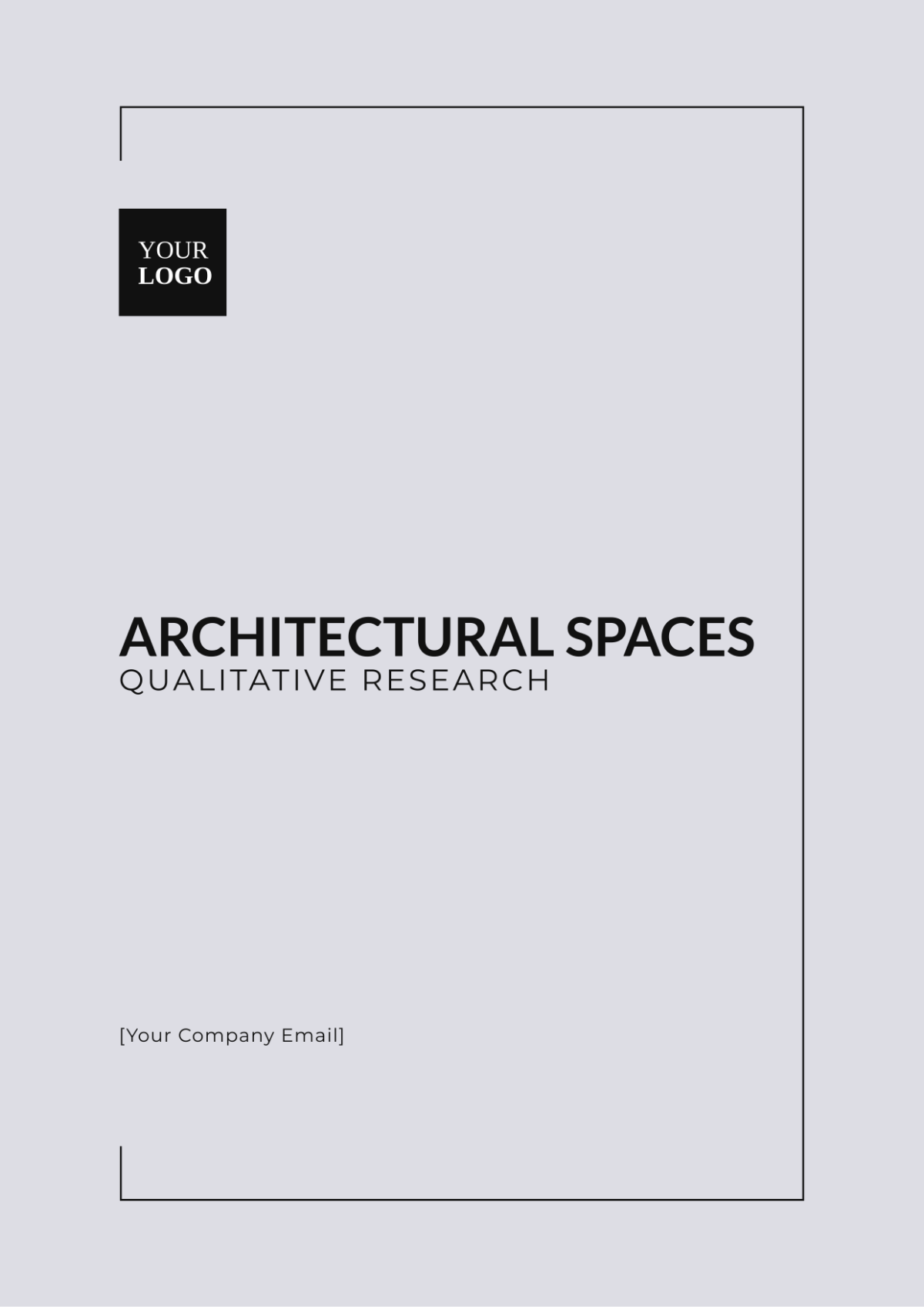Architectural Spaces Qualitative Research
Researcher: [Your Name]
Date: [Date]
I. Introduction
Architectural Spaces Qualitative Research delves into the ways individuals perceive and interact with their environments. Unlike quantitative research, which focuses on measurable data, qualitative research emphasizes subjective experiences, including user perceptions, emotions, and behaviors. This approach uses methodologies such as interviews, observations, and case studies to explore the nuanced effects of architectural designs on users. By understanding these interactions, designers can create spaces that are not only functional but also resonate emotionally and culturally with their occupants.
II. Literature Review
The literature surrounding qualitative research in architectural spaces highlights a diverse range of perspectives and methodologies. Key studies have significantly advanced our understanding of how design influences user experiences. For example:
Common themes explored in the literature include:
Sensory and Emotional Engagement: The sensory qualities of architectural spaces, including light, sound, and texture, play a crucial role in shaping emotional responses. This theme emphasizes the need for designs that engage users on multiple sensory levels.
III. Methodology
This research employs a multi-method qualitative approach to gather rich, detailed data on user experiences within architectural spaces. The primary techniques include:
IV. Findings
The findings highlight key aspects of architectural design that significantly affect user experiences:
Materiality: The choice of materials affects sensory and emotional engagement. For instance, natural materials like wood and stone often evoke a sense of warmth and connection, while synthetic materials can impact the perceived quality of a space.
The following tables and charts provide a summary of user feedback on different design elements:
Design Element | User Feedback |
|---|
Spatial Layout | Enhanced interaction, sense of community |
Natural Light | Improved well-being, satisfaction |
Acoustic Quality | Comfortable environment |
Materiality | Sensory engagement, emotional connection |
V. Discussion
The findings emphasize the significance of integrating user experience considerations into architectural design. Key insights include:
Enhanced Interaction: Open and flexible layouts facilitate user interactions and support a sense of community, making spaces more inclusive and engaging.
Well-being and Satisfaction: Access to natural light and effective acoustic management are critical for enhancing user comfort and overall satisfaction.
Emotional and Sensory Impact: The choice of materials and sensory qualities of spaces significantly influence users' emotional responses and connection to their environment.
This research underscores the need for a holistic approach to architectural design that considers sensory, emotional, and social dimensions. Future studies could explore longitudinal impacts, such as how long-term exposure to specific design features affects users over time.
VI. Conclusion
Qualitative research in architectural spaces offers valuable insights into user experiences and interactions. By focusing on subjective aspects such as perceptions, behaviors, and emotional responses, this research provides a deeper understanding of how design influences user satisfaction and well-being. Integrating these qualitative insights into the design process can lead to more thoughtful and impactful architectural solutions that resonate with users on multiple levels.
VII. References
Gehl, J. (2051). Life Between Buildings: Using Public Space. Island Press.
Pallasmaa, J. (2052). The Eyes of the Skin: Architecture and the Senses. Wiley.
Research Templates @ Template.net






























